Having survived genocide by German troops in the 1900s, Namibia's Himba people are now facing a bigger threat to their way of life - encroaching modernity.
Little has changed in Omuhoro village for generations - people live off the land and are closed off from the rest of the world.
At day break, it is milking time - one of the daily duties of the village's women.
The days are long but everyone has a role to play.
The older women walk for kilometres to collect firewood and water, while another group focuses on cooking enough food to feed the 30 or so mouths in this homestead.
The boys mainly look after the cattle and goats while the young girls help with taking care of the many children running around - there is a great sense of shared responsibility.
But since Namibia's independence in the early 1990s, a different lifestyle has begun to filter through.
'The children feel shame'
A steady stream of young men and women has been opting to leave the slow village life in exchange for a fast-paced modern world.
Now some are worried this move will eventually spell the death of Himba culture.
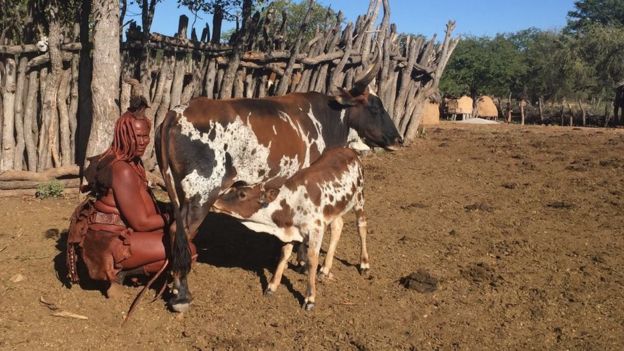
Owen Kataparo, a Himba man who grew up in Omuhoro, has taken me back to the Kunene region, an arid and rural area in north-east Namibia to show me how his community is changing.
We are welcomed by village head Chief Nongaba. He has four wives and 19 children - he is a small man but exudes authority.
Three of his children attend school - some villagers think this is a bad idea. They say they've seen how school changes their children.
Mr Kataparo agrees.
"When these children get into school, most of the children feel shame. They think most of the children are talking about them, that they are not looking so beautiful," he tells me.
Looking the part
The Himba are known for their red matted braids, which are painstakingly made by mixing animal fat, ash and ground ochre, a stone found locally.
A few steps from where we are sitting, a group of women are bonding. They are smearing their bodies with the same ochre mixture.
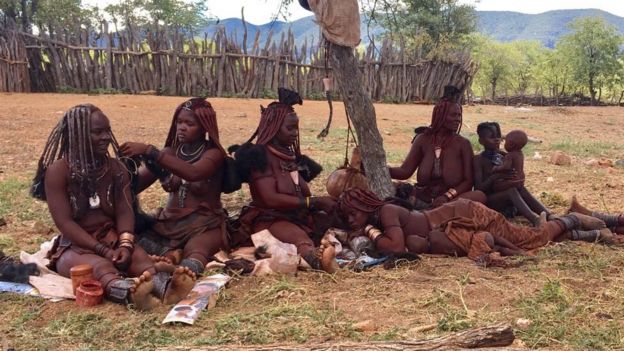
Their mahogany skin glistens under the Namibian sun. They tell me this is their beautification ritual, and one of their distinguishing features.
It strikes me that Mr Kataparo is in western clothing - khaki shorts and a blue check shirt.
The irony is not lost on him - now a successful businessman, Mr Kataparo says he feels he needs to assimilate to fit in.
"When I'm in traditional clothes outside the village, I get strange looks. I have a few businesses and people treat me with more respect when I look like them, they take me more seriously," he says.
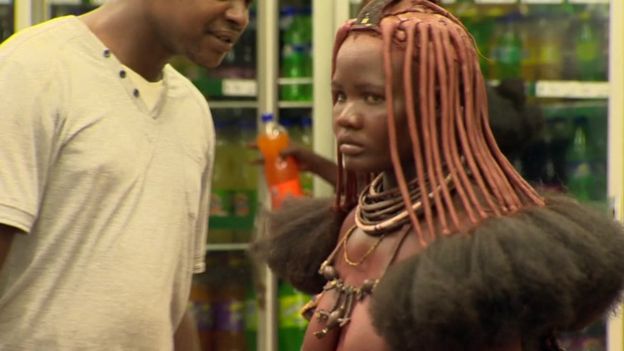
The young men in this village see him as a sign of success - a poster boy of what's possible. He is torn by this influence, he says.
"A lot of boys leave the village and go down into the town to try to find a job," he says.
"Some of the boys find a job, some of the boys don't find a job, and then some of them decide to take alcohol. They end up abusing their life."
For those taking the leap, the closest town is Opuwo, an hour's drive away and the capital of this region.
It's nothing to marvel at but its restaurants, supermarkets and bars offer the first taste of a completely different life.
Problem drinking
One of the most popular hangouts for the Himba living in Opuwo is the Arsenal Bar owned by a Himba man, Seblon Nghiphangelwa, a friend of Mr Kataparo. It is one of 15 in the region and they all belong to him.
Here they come to shed the responsibilities that come with traditional living, in this world it is everyone for themselves.
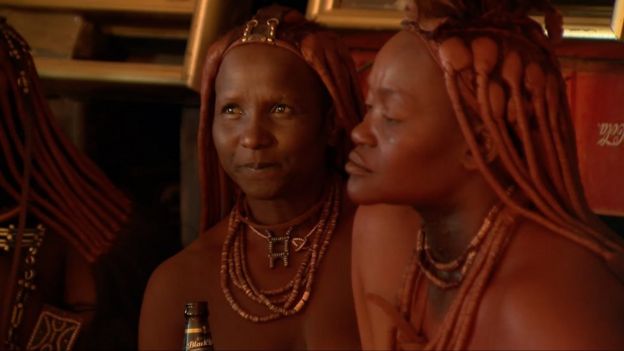
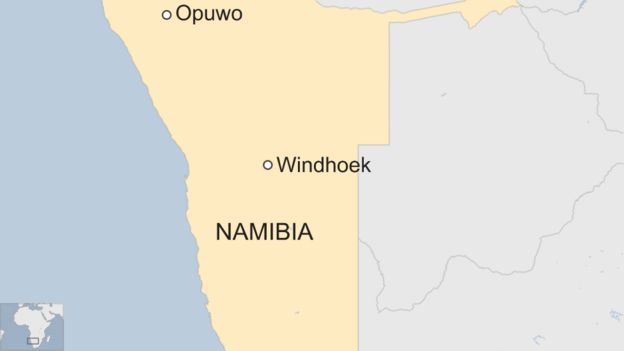
"Most of my customers are Himba, they come here every day," Mr Nghiphangelwa tells me.
"Sometimes I feel ashamed when I see members of the Himba community getting drunk here. But I also feel ashamed to see them in Western clothing," he adds.
'The world has changed'
Back in Omuhoro, Chief Nongaba says this dilemma is inevitable.
As head of the village, you'd expect him to be fighting to hold on to the past but instead he is preparing his children for a life outside the village walls - by sending them to school.

But Chief Nongaba, who has never set foot inside a classroom, says it is his duty to prepare his children for a life outside the village.
"I want them to become doctors, teachers, work in government. I want them to live a different life to me, I want them to look like you," he tells me.
"Why?" I ask and without hesitation, he responds: "The world has changed."
But one of his wives, Mama Moharerwa, a tall figure with a booming voice, tells me their people belong in the village.
"The best life for us is in the villag - it's how we've lived for many years, it's what we know. In the city we cannot survive."
People like Mr Kataparo are caught between the allure of modern life and a desire to save his traditional culture,
